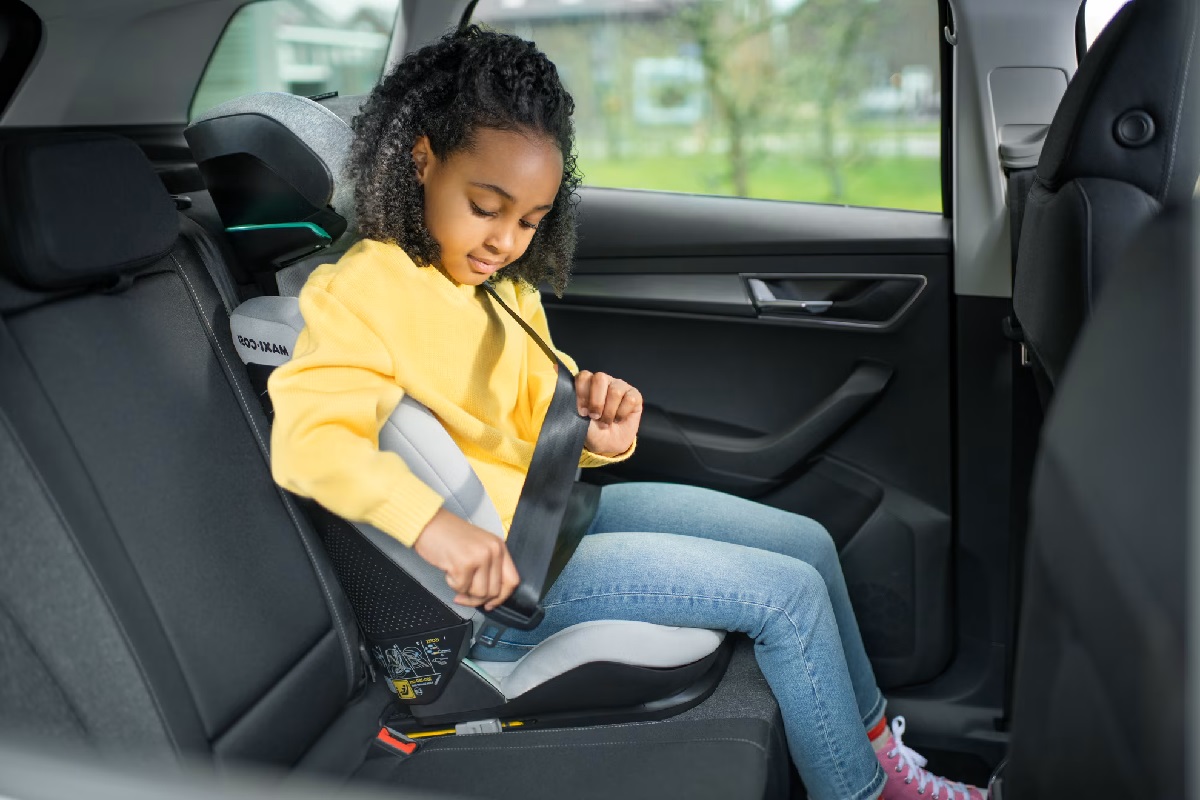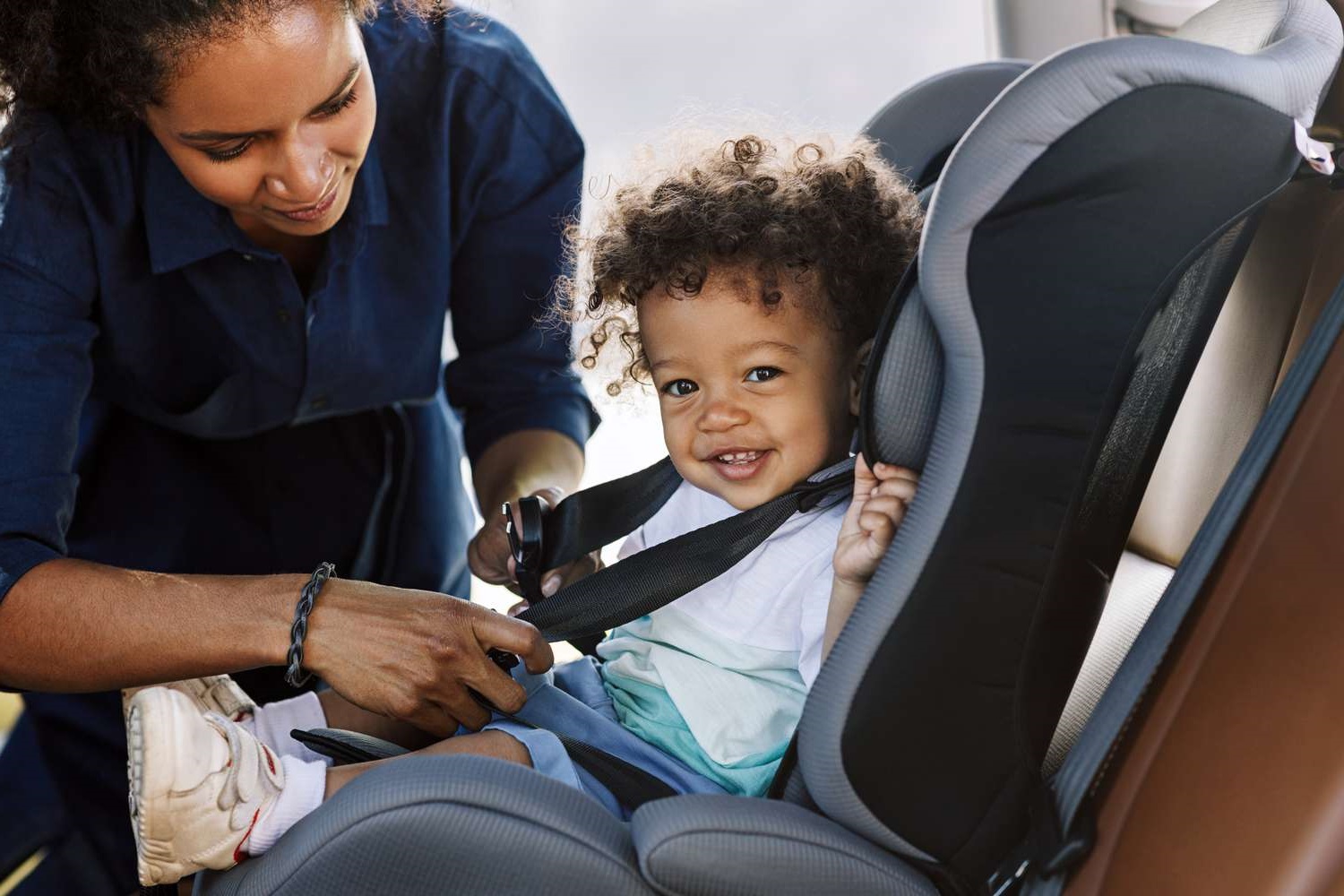Home>Maintenance & Safety>Child & Elderly Safety at Home>When Can A Child Stop Using A Booster Seat In Florida?


Child & Elderly Safety at Home
When Can A Child Stop Using A Booster Seat In Florida?
Modified: March 2, 2024
Learn about the Florida laws for child safety seats and when a child can stop using a booster seat. Ensure child and elderly safety at home.
(Many of the links in this article redirect to a specific reviewed product. Your purchase of these products through affiliate links helps to generate commission for Storables.com, at no extra cost. Learn more)
Introduction
Ensuring the safety of children in vehicles is a top priority for parents and caregivers. In Florida, as in many other states, there are specific laws and guidelines in place to protect young passengers. One crucial aspect of child safety in vehicles is the use of booster seats. These seats are designed to provide additional protection and proper positioning for children who have outgrown their forward-facing car seats but are not yet ready to use a vehicle's seat belt alone.
Understanding when a child can stop using a booster seat in Florida is essential for parents and caregivers. It involves considering various factors such as age, weight, and height, as well as adhering to the state's regulations. By gaining insight into the legal requirements and best practices for transitioning out of a booster seat, caregivers can ensure that children travel safely and comfortably in vehicles.
In this article, we will delve into the Florida law on booster seat requirements, explore the factors to consider when determining if a child can transition out of a booster seat, and provide valuable tips for this transition. By the end of this comprehensive guide, readers will have a clear understanding of the guidelines and best practices for ensuring child safety in vehicles in the state of Florida.
Key Takeaways:
- Children in Florida must use booster seats until they’re 5 years old or weigh over 40 pounds. It’s important to ensure the seat belt fits properly for their safety.
- When transitioning a child out of a booster seat, take it slow, educate them about seat belt safety, and seek professional guidance if needed. Safety first!
Florida Law on Booster Seat Requirements
In Florida, the law mandates the use of booster seats for children under a certain age, weight, and height. According to Florida Statute 316.613, children are required to be secured in a crash-tested, federally approved child restraint device until they reach a specific developmental stage. This statute outlines the following requirements:
-
Age and Weight Criteria: Children under the age of 5 and weighing less than 40 pounds are required to be secured in a child restraint device. This device can be a separate carrier, an integrated child seat, or a child booster seat.
-
Height Consideration: Additionally, the law states that children who have not yet reached 4 feet 9 inches in height must be secured in a federally approved child restraint system.
-
Vehicle Seat Belt: Once a child meets the age, weight, and height requirements outlined in the law, they can transition to using a vehicle's seat belt. However, it is crucial to ensure that the seat belt fits properly. This means that the lap belt must lie snugly across the upper thighs, not the stomach, and the shoulder belt should cross the chest and shoulder, not the neck or face.
It is important for caregivers to understand that these requirements are in place to protect children in the event of a collision. Booster seats are designed to position the vehicle's seat belt correctly on a child's body, reducing the risk of injury. By adhering to these regulations, caregivers can help ensure the safety of young passengers while traveling in Florida.
Understanding the specific legal requirements for booster seat usage in Florida is essential for caregivers. By following these guidelines, caregivers can help protect children and ensure their safety while traveling in vehicles.
Factors to Consider
When determining if a child can transition out of a booster seat in Florida, several crucial factors must be taken into account. Understanding these factors is essential for ensuring the safety and well-being of young passengers. Here are the key considerations:
Age and Developmental Readiness
Children develop at different rates, and their physical readiness to transition out of a booster seat is not solely determined by their age. While the law provides age-related guidelines, it is important to assess a child's individual developmental readiness. Some children may reach the height and weight requirements before others, indicating that they are physically prepared to transition to a vehicle's seat belt.
Height and Weight
The height and weight of a child play a significant role in determining their readiness to transition out of a booster seat. As mentioned in Florida's booster seat law, children who have not yet reached 4 feet 9 inches in height and weigh less than 40 pounds are required to use a child restraint device. However, once a child surpasses these measurements, they may be ready to transition to a vehicle's seat belt.
Physical Fit and Comfort
Even if a child meets the age, height, and weight requirements outlined in the law, it is essential to ensure that the vehicle's seat belt fits them properly. The lap belt should lie snugly across the upper thighs, not the stomach, and the shoulder belt should cross the chest and shoulder, not the neck or face. Additionally, the child should be able to sit comfortably with their back against the vehicle seat, knees bent at the edge of the seat, and feet touching the floor.
Behavioral Maturity
Apart from physical readiness, a child's behavioral maturity is also a crucial factor to consider. Transitioning out of a booster seat requires a certain level of maturity and understanding of the importance of wearing a seat belt at all times while in a vehicle. Caregivers should assess a child's ability to remain seated properly and refrain from moving around excessively during car rides.
Vehicle Type and Seating Position
The type of vehicle and seating position can impact a child's safety when transitioning out of a booster seat. Different vehicles may have varying seat belt configurations, and certain seating positions may provide more secure belt fit than others. Caregivers should consider these factors when determining if a child is ready to transition to a vehicle's seat belt.
By carefully considering these factors, caregivers can make informed decisions regarding when a child can safely transition out of a booster seat in Florida. It is crucial to prioritize the safety and well-being of young passengers, ensuring that they are adequately protected while traveling in vehicles.
Tips for Transitioning Out of a Booster Seat
Transitioning a child out of a booster seat is a significant milestone that requires careful consideration and preparation. As caregivers navigate this important transition, several tips can help ensure a smooth and safe progression for the child. Here are valuable tips for transitioning out of a booster seat in Florida:
1. Gradual Transition:
Instead of abruptly removing the booster seat, consider a gradual transition. Start by allowing the child to use the vehicle's seat belt while still using the booster seat. This approach provides a gradual adjustment period, allowing the child to become accustomed to the new seating arrangement while maintaining an added layer of protection.
2. Education and Reinforcement:
Educate the child about the importance of using a seat belt properly. Emphasize the significance of staying seated and wearing the seat belt at all times while the vehicle is in motion. Reinforce these safety practices consistently, instilling a sense of responsibility and awareness in the child.
3. Test Belt Fit:
Before transitioning out of the booster seat, ensure that the vehicle's seat belt fits the child correctly. Verify that the lap belt lies snugly across the upper thighs, not the stomach, and that the shoulder belt crosses the chest and shoulder, not the neck or face. Conducting this test ensures that the seat belt provides adequate protection and comfort for the child.
4. Model Safe Behavior:
As a caregiver, lead by example by consistently wearing a seat belt while driving or riding in the vehicle. Children often emulate the behavior of adults, so demonstrating safe practices reinforces the importance of using seat belts and adhering to safety regulations.
5. Encourage Positive Reinforcement:
Praise the child for practicing safe and responsible behavior while using the vehicle's seat belt. Positive reinforcement can motivate the child to continue following safety guidelines and develop a habit of wearing the seat belt correctly.
6. Regular Safety Checks:
Conduct regular safety checks to ensure that the child remains comfortable and secure while using the vehicle's seat belt. Periodically assess the fit of the seat belt and address any discomfort or issues that may arise during travel.
7. Seek Professional Guidance:
If uncertain about the timing of transitioning out of a booster seat, seek guidance from a certified child passenger safety technician. These professionals can provide personalized recommendations based on the child's specific needs and ensure a smooth and safe transition.
By implementing these tips, caregivers can facilitate a successful transition for the child, promoting a culture of safety and responsibility while traveling in vehicles. Prioritizing the child's safety and well-being throughout this process is paramount, and these tips serve as valuable tools for achieving a seamless transition out of a booster seat in Florida.
Conclusion
In conclusion, ensuring the safety of children in vehicles is a responsibility that demands careful attention and adherence to specific guidelines. In the state of Florida, the law mandates the use of booster seats for children under certain age, weight, and height criteria. By following these regulations, caregivers can provide young passengers with the necessary protection and support while traveling in vehicles.
When considering when a child can stop using a booster seat in Florida, it is essential to take into account various factors such as age, height, weight, physical fit, behavioral maturity, and the type of vehicle and seating position. These considerations play a crucial role in determining a child's readiness to transition to using a vehicle's seat belt, ensuring their safety and comfort during travel.
Transitioning a child out of a booster seat is a significant milestone that requires careful planning and preparation. By implementing a gradual transition, educating and reinforcing safe behavior, testing belt fit, modeling responsible practices, and seeking professional guidance when needed, caregivers can facilitate a smooth and successful transition for the child.
Ultimately, the goal is to prioritize the safety and well-being of young passengers, creating a culture of safety and responsibility while traveling in vehicles. By understanding the Florida law on booster seat requirements, considering the relevant factors, and implementing valuable tips for transitioning out of a booster seat, caregivers can ensure that children travel safely and comfortably, promoting a positive and secure experience for all passengers.
In essence, the journey of transitioning a child out of a booster seat is a testament to the commitment to child safety, and by navigating this process with diligence and care, caregivers play a pivotal role in safeguarding the well-being of young passengers on the roads of Florida.
Frequently Asked Questions about When Can A Child Stop Using A Booster Seat In Florida?
Was this page helpful?
At Storables.com, we guarantee accurate and reliable information. Our content, validated by Expert Board Contributors, is crafted following stringent Editorial Policies. We're committed to providing you with well-researched, expert-backed insights for all your informational needs.













0 thoughts on “When Can A Child Stop Using A Booster Seat In Florida?”